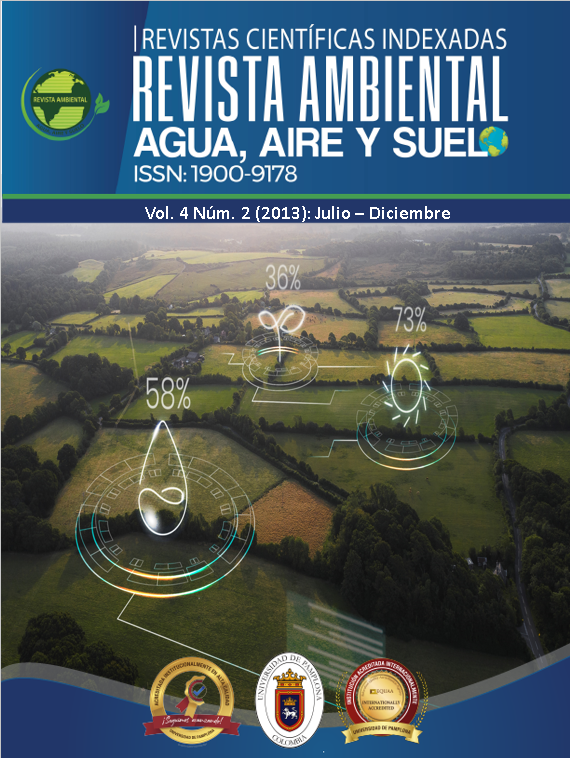Use of hydrological models to determine watersheds in páramo ecosystems
DOI:
https://doi.org/10.24054/aaas.v4i2.2026Keywords:
SWAT, paramo , hydrologyAbstract
This hydrological study focuses on analyzing the water network that flows from the Cortadera moorland located in the municipalities of Toca and Siachoque (Boyacá, Colombia). For the analysis, the basin was divided into five sub-basins due to its size and the confluence of the waters towards the Copa dam, the final delivery point. To
delimit the watershed, the different sub-basins, a morphometric analysis, a digital elevation model (DEM), ArcGIS 9.3, and the SWAT (Soil and Water Assessment Tool) program were taken into account. The digital vector and raster information at a scale of 1:250,000 was provided by the Boyacá Regional Autonomous Corporation (CORPOBOYACA) and the
Agustín Codazzi Geographic Institute (IGAC). The results obtained provide insight into the hydrological behavior of the entire basin and the five sub-basins, serving as a tool for land use planning and management, institutional decision-making, and natural resource management
Downloads
References
Amaras. (2009). Diagnóstico, evaluación y estado actual de las áreas de páramo que hacen parte del páramo de Cortadera en los municipios de Tuta, Pesca, Toca y Siachoque, Departamento de Boyacá. Tunja, Colombia.
Armenteras, D., Gast, F., & Villareal, H. (2003). Andean forest fragmentation and the representativeness of protected natural areas in the eastern Andes, Colombia. Biological Conservation, 113, 245–256.
Buytaert, W., Célleri, R., De Bièvre, B., Cisneros, F., Wyseure, G., Deckers, J., & Hofstede, R. (2006). Human impact on the hydrology of the Andean páramos. Earth-Science Reviews, 79, 53–72.
Chen, J., & Wu, Y. (2012). Advancing representation of hydrologic processes in the Soil and Water Assessment Tool (SWAT) through integration of the TOPographic Model (TOPMODEL) features. Journal of Hydrology, 420–421, 319–328.
Díaz-Granados, M. A., Navarrete González, J. D., & Suárez López, T. (2005). Páramos: Hidrosistemas sensibles. Revista de Ingeniería, 22. Facultad de Ingeniería, Universidad de los Andes.
Instituto de Investigación de Recursos Biológicos Alexander von Humboldt (IAvH). (2011). Concepto técnico pertinente a la delimitación y caracterización del sistema paramuno en el área de la Serranía de Santurbán, ubicada en el departamento de Santander. Ministerio de Ambiente, Vivienda y Desarrollo Territorial. Recuperado el 16 de junio de 2011 de http://www.humboldt.org.co/iavh/documentos/Concepto_Tecnico_IAVH_2400-2-21420-Santurban.pdf.
Ministerio del Medio Ambiente. (2002). Programa para el manejo sostenible y restauración de ecosistemas de la alta montaña colombiana: Páramos. Bogotá, Colombia. Recuperado el 6 de noviembre de 2011 de http://www.banrepcultural.org/blaavirtual/geografia/congresoparamo/programa-nacional.pdf.
Morales, M., Otero, J., Van der Hammen, T., Torres, A., Cadena, C., Pedraza, C., Rodríguez, N., Franco, C., Betancourt, J. C., Olaya, E., Posada, E., & Cárdenas, L. (2007). Atlas de Páramos de Colombia. Instituto de Investigación de Recursos Biológicos Alexander von Humboldt. Bogotá, Colombia.
Navarrete, J. D. (2004). Hidrología de páramos: Modelación de la cuenca alta del río Blanco con AVSWAT 2000. Universidad de los Andes, Departamento de Ingeniería Civil y Ambiental. Bogotá, Colombia.
Ruiz, D., Moreno, H. A., Gutiérrez, M. E., & Zapata, P. A. (2008). Changing climate and endangered high mountain ecosystems in Colombia. Science of the Total Environment, 398, 122–132.
Rouholahnejad, E., Abbaspour, K. C., Vejdani, M., Srinivasan, R., & Kløve, B. (2012). A parallelization framework for calibration of hydrological models. Environmental Modelling & Software, 31, 28–36.
Schuol, J., Abbaspour, K. C., Yang, H., Srinivasan, R., & Zehnder, A. J. (2008). Estimation of freshwater availability in the West African sub-continent using the SWAT hydrologic model. Journal of Hydrology, 352, 30–49.
Tobón, C. (2009). Los bosques andinos y el agua. Serie Investigación y Sistematización #4. Programa Regional ECOBONA – INTERCOOPERATION, CONDESAN. Quito, Ecuador.
Downloads
Published
Issue
Section
License
Copyright (c) 2022 REVISTA AMBIENTAL AGUA, AIRE Y SUELO

This work is licensed under a Creative Commons Attribution-NonCommercial 4.0 International License.










